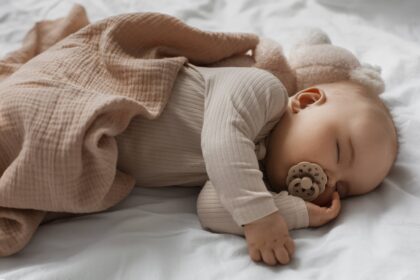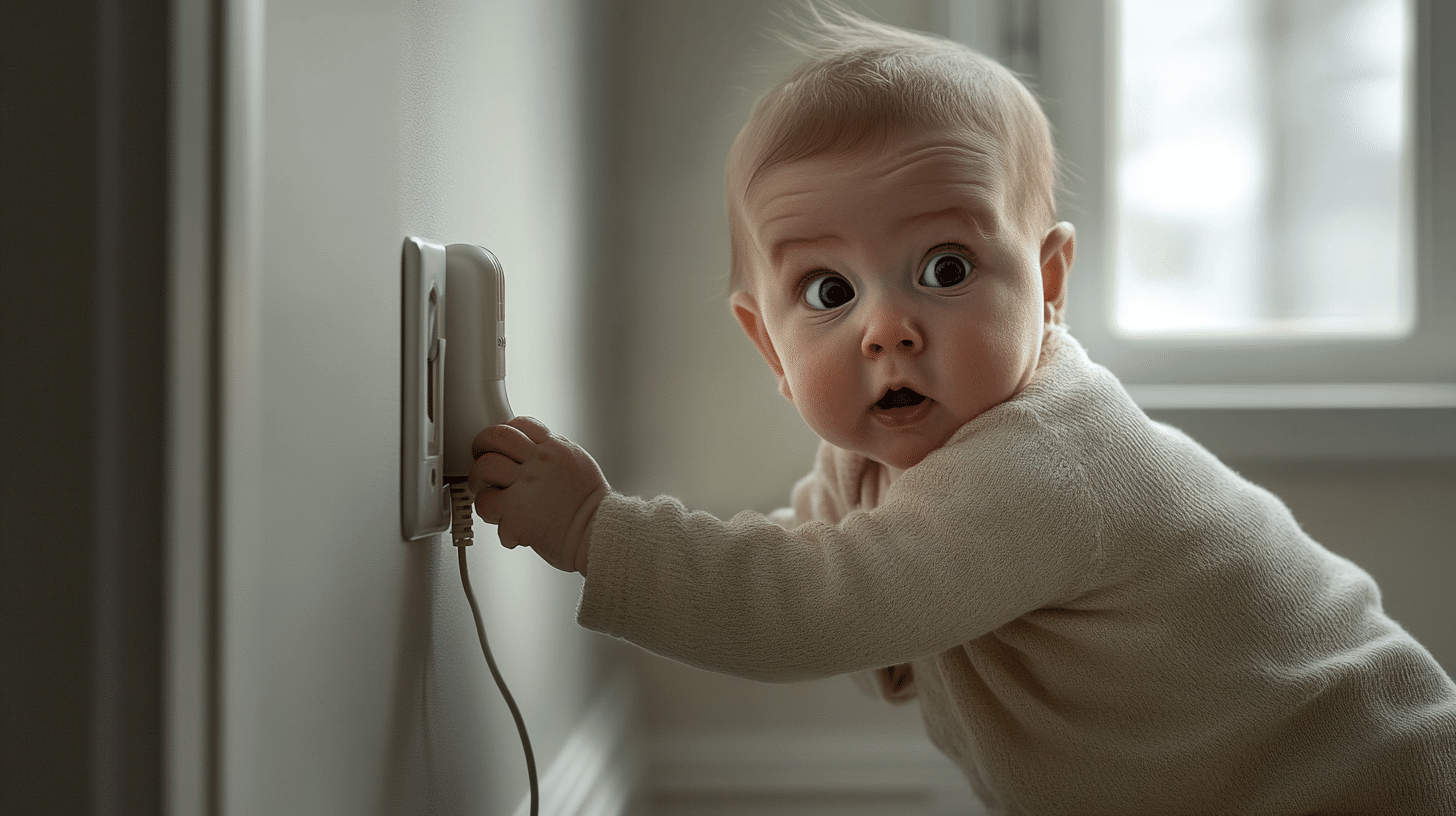New parents are often faced with a mountain of decisions, and one of the first – and most important – is how to diaper their little one. With so many options available, it can feel overwhelming to navigate the world of diapers. This article provides an in-depth look at the two main contenders: cloth diapers and disposable diapers. We'll explore the pros and cons of each, considering factors like cost, environmental impact, convenience, and baby's comfort, to help you make an informed choice for your family.
- Types of Cloth Diapers
- Best Cloth Diapers for Newborns
- Cloth Diaper Washing Routines
- Diaper Services
- Cost Comparison: Cloth vs. Disposable
- Environmental Impact
- Convenience
- Diaper Rash and Skin Health
- Cloth Diapers and Potty Training
- Cloth Wipes
- Flushable and Reusable Liners
- Potential Health Concerns of Disposable Diapers
- Conclusion: Making the Right Choice
Types of Cloth Diapers
Modern cloth diapers come in a variety of styles to suit different needs and preferences. Here are some of the most common types:
- Flats and Prefolds: These are the most basic type of cloth diaper, consisting of a single layer of absorbent fabric (flat) or a rectangular piece of fabric with multiple layers in the center (prefold). They are generally made from cotton, which is a natural fiber that absorbs quickly. Flats and prefolds are the most economical option and dry quickly. They require folding and fastening with pins or Snappis and need a separate waterproof cover.
- Fitted Diapers: These diapers are contoured to fit like a disposable diaper, with elastic at the legs and back. They are very absorbent but require a separate waterproof cover. Fitted diapers are easier to use than flats or prefolds but are more expensive.
- Pocket Diapers: These diapers have a waterproof outer layer and a stay-dry inner layer with a pocket opening for inserting absorbent inserts. They offer a customizable fit and absorbency and dry faster than all-in-ones. Pocket diapers are a popular choice for their ease of use.
- All-in-Ones (AIOs): AIOs are the most similar to disposable diapers in terms of convenience. They have a built-in absorbent layer and a waterproof cover, making them easy to use. However, they can take longer to dry.
- All-in-Twos (AI2s): AI2s have a waterproof outer layer (shell) and absorbent inserts that can be snapped or laid inside. They offer some of the convenience of AIOs while allowing for greater customization.
Diaper Inserts:
One of the key features of pocket diapers and AI2s is the ability to customize absorbency using different inserts. Some common insert materials include:
- Microfiber: These inserts are very absorbent and inexpensive but can be prone to compression leaks.
- Cotton: Cotton inserts are a natural fiber with good absorbency and a comfortable feel.
- Bamboo: Bamboo inserts are known for their high absorbency and eco-friendliness.
- Hemp: Hemp inserts are highly absorbent and durable, making them a good choice for heavy wetters or overnight use.
Diaper Covers:
Diaper covers, also known as wraps, are essential for use with flats, prefolds, and fitted diapers. They provide a waterproof barrier to prevent leaks. Some common cover materials include:
- Wool: Wool covers are naturally water-resistant and breathable, making them a good choice for babies with sensitive skin.
- Fleece: Fleece covers are soft and comfortable but less water-resistant than other materials.
- PUL (Polyurethane Laminate): PUL covers are widely used and offer a good balance of water resistance and breathability.
- Nylon: Nylon covers are durable and waterproof but less breathable than other options.
Diaper Sizes:
Cloth diapers come in a variety of sizes to fit babies of different ages and weights.
- Newborn: These diapers are designed for babies weighing 6-10 pounds.
- Sized Diapers: These diapers come in different sizes (small, medium, large) with specific weight ranges.
- One-Size Diapers: These diapers have adjustable snaps or other features to fit babies from around 8 to 35 pounds.
Key Insight: Cloth diapers offer a high level of customization. Parents can choose different types of diapers, inserts, and covers to create a diapering system that meets their baby's individual needs.
Best Cloth Diapers for Newborns
Choosing the right cloth diaper for a newborn can be especially important, as newborns have delicate skin and require frequent changes. Here are some of the best cloth diapers for newborns:
| Brand | Model | Type | Features | Price |
|---|---|---|---|---|
| Thirsties | One Size All In One | AIO | Extra rows of snaps, great fit, very cute patterns | $24 |
| Charlie Banana | One Size Reusable Cloth Diaper | Many cute prints, inner adjustable flaps, decent liquid absorbency | $28 | |
| bumGenius | Freetime 2.0 All-In-One One-Size Cloth Diaper | AIO | Good for belly sleepers, thicker elastic | $25 |
| Kanga Care | Rumparooz One Size Pocket Cloth Diaper | Good absorbency, many cute prints, four size settings | $24 | |
| Kinder | Pocket Cloth Diaper with Athletic Wicking Jersey Version 2.0 | Organic | $20 |
These diapers are known for their absorbency, comfort, and ease of use for newborns.
Cloth Diaper Washing Routines
Washing cloth diapers is an essential part of using them effectively. Here's a general guideline for washing routines:
- Frequency: Most manufacturers recommend washing cloth diapers every two to three days.
- Preparation: Remove solid waste from the diapers before washing. Breastfed babies' diapers can go straight into the wash, while diapers with solid waste need to be rinsed or sprayed off.
- Detergent: Use a cloth diaper-safe detergent, free of fabric softeners, dyes, and perfumes.
- Washing Machine: Wash diapers in a washing machine with hot water (up to 104°F/40°C) using a long wash cycle.
- Drying: Cloth diapers can be tumble dried on low heat or line-dried. Line drying in the sun can help with stain removal.
Best Detergents for Cloth Diapers:
Choosing the right detergent is crucial for effectively cleaning cloth diapers and preventing skin irritation. Here are some recommended detergents:
| Brand | Type | Features |
|---|---|---|
| Tide | Powder | Effective cleaning, balanced formula |
| All Free and Clear | Liquid | Effective cleaning, neutral scents |
| Persil | Liquid | Strong cleaning power |
| Arm & Hammer Free and Clear | Liquid | Gentle cleaning, free of dyes and perfumes |
| Rockin' Green Dirty Diaper Detergent | Powder | Natural detergent, works well for sensitive skin |
These detergents are free of fabric softeners and other additives that can damage cloth diapers or irritate a baby's skin.
Diaper Services
For parents who want the benefits of cloth diapers without the hassle of washing, diaper services are an option. These services provide a regular supply of clean cloth diapers and pick up soiled diapers for laundering.
Pros of Diaper Services:
- Convenience: No need to wash diapers at home.
- Reduced environmental impact: Diaper services often use efficient washing practices.
Cons of Diaper Services:
- Cost: Diaper services can be more expensive than washing diapers at home.
- Limited availability: Diaper services may not be available in all areas.
Cost Comparison: Cloth vs. Disposable
One of the biggest considerations for parents is the cost of diapering. While cloth diapers require a larger upfront investment, they can save money in the long run.
Disposable Diapers:
- The average cost of disposable diapers is around $870 per year.
- Over 2-3 years, the total cost can range from $1,800 to $4,500.
- Additional costs include wipes, diaper pail liners, and diaper rash cream.
- The total cost of disposable diapering, including diapers, wipes, and diaper pail refills, can be as high as $2,839.
Cloth Diapers:
- The initial investment for a full stash of cloth diapers can range from $300 to $800.
- Ongoing costs include laundry detergent and increased water usage, averaging $10 to $20 per month.
- Cloth diapers can be reused for multiple children, significantly reducing the cost per child.
- Cloth diapers can be resold after use, recouping some of the initial investment.
Cost Comparison Summary:
| Diaper Type | Initial Cost | Ongoing Cost | Resale Value | Cost per Child for Multiple Children | Long-Term Cost |
|---|---|---|---|---|---|
| Disposable | Low | High | None | $1,800 – $4,500 | $1,800 – $4,500 |
| Cloth | High | Low | Moderate | Under $500 | Under $1,000 |
| Hybrid | Moderate | Moderate | Moderate | Under $1,000 | $1,000 – $2,000 |
Key Insight: While the initial cost of cloth diapers is higher, they offer significant long-term savings, especially for families planning to have more children.
Environmental Impact
Both cloth and disposable diapers have an environmental impact, but in different ways.
Disposable Diapers:
- Disposable diapers create mountains of waste that clog our landfills, taking hundreds of years to decompose.
- An estimated 20 billion disposable diapers end up in landfills each year, generating over 3.5 million tons of diaper waste.
- They generate more solid waste and use more raw materials in production.
- The manufacturing process uses a significant amount of water and energy.
- Disposable diapers can contain chemicals that may be harmful to the environment.
Cloth Diapers:
- Cloth diapers reduce landfill waste by being reusable.
- They require water and energy for washing, but the overall impact is lower than disposable diapers.
- The production of cloth diapers can also have an environmental impact, especially if made from cotton, which requires a lot of water to produce.
Key Insight: While both types have an impact, cloth diapers are generally considered more environmentally friendly due to their reusability and lower overall resource consumption.
Convenience
Disposable diapers are known for their convenience, but modern cloth diapers have made significant strides in this area.
Disposable Diapers:
- Easy to use and dispose of.
- Readily available in most stores.
- No need for washing or special storage.
Cloth Diapers:
- Require washing and drying.
- May be less convenient for travel or daycare.
- Can be bulkier than disposables.
- Require more frequent changes due to lower absorbency.
Key Insight: While disposables are more convenient in the short term, cloth diapers offer a sustainable and less wasteful diapering solution with a bit more effort.
Diaper Rash and Skin Health
Diaper rash is a common concern for parents, regardless of the type of diaper used. However, there are some differences to consider between cloth and disposable diapers.
Disposable Diapers:
- Highly absorbent, keeping babies feeling dry.
- May contain chemicals that can irritate some babies' skin.
- Breathability can vary between different types of disposable diapers, and some may trap heat and moisture.
Cloth Diapers:
- Made from soft, natural materials.
- While traditional cloth diapers may have been less absorbent, modern cloth diapers with proper inserts can be just as absorbent as disposables.
- May require more frequent changes due to lower absorbency.
- Can be bulkier than disposables.
Tips for Preventing Diaper Rash:
- Change diapers frequently.
- Clean the diaper area thoroughly with warm water and a mild cleanser.
- Allow the skin to air dry.
- Apply a barrier cream or ointment.
- Choose the right diaper size and ensure a proper fit.
- Consider using cloth-safe diaper rash creams that are petroleum-free and zinc-free.
Key Insight: Frequent diaper changes and proper hygiene are crucial for preventing diaper rash, regardless of whether you use cloth or disposable diapers. Cloth diapers may be a better choice for babies with sensitive skin due to the natural materials and lack of chemicals.
Cloth Diapers and Potty Training
Some studies suggest that cloth diapering might help facilitate potty training by establishing the cues of wetness. Because cloth diapers are less absorbent than disposables, babies may feel the wetness more readily and become more aware of when they need to go. This awareness can help them transition to using the potty sooner.
Cloth Wipes
In addition to cloth diapers, many parents choose to use cloth wipes as a more sustainable and gentle alternative to disposable wipes. Cloth wipes are typically made from soft, natural materials like cotton or bamboo and can be washed and reused.
Flushable and Reusable Liners
Flushable and reusable liners can make cloth diapering easier and more convenient. Flushable liners are placed inside the diaper to catch solid waste, making disposal easier. Reusable liners are made from fleece or other materials and can be washed and reused.
Potential Health Concerns of Disposable Diapers
While disposable diapers are generally safe, some parents have concerns about the chemicals they may contain. Some disposable diapers contain chemicals like dioxins, which are byproducts of the paper-bleaching process and are potentially harmful. These chemicals may irritate a baby's skin or pose other health risks. Additionally, a German study showed that boys who wear disposables maintain a higher scrotal temperature, which may pose fertility issues in later life.
Conclusion: Making the Right Choice
The decision between cloth and disposable diapers is a personal one. There is no right or wrong answer, as the best choice depends on your individual circumstances, priorities, and lifestyle. Consider the factors discussed in this article, weigh the pros and cons, and choose the option that best suits your family's needs.
Here's a summary of the key differences between cloth and disposable diapers:
| Feature | Cloth Diapers | Disposable Diapers |
|---|---|---|
| Cost | Higher initial cost, lower long-term cost | Lower initial cost, higher long-term cost |
| Environmental Impact | Generally more environmentally friendly | Contribute significantly to landfill waste |
| Convenience | Require washing and drying | Easy to use and dispose of |
| Baby's Comfort | Made from natural materials, may be more comfortable for sensitive skin | Highly absorbent, may contain chemicals |
| Potty Training | May contribute to earlier potty training | May delay potty training |
If you prioritize cost savings and environmental friendliness, cloth diapers are a strong contender. If convenience and ease of use are paramount, disposable diapers may be more appealing. Ultimately, the “diaper dilemma” is best resolved by considering your own preferences and finding a solution that works for you and your baby.
While cloth diapers offer significant environmental benefits, it's important to acknowledge the challenges associated with them. Washing cloth diapers requires water and energy, and the production of cloth diapers can also have an environmental impact. However, when considering the full lifecycle of both options, cloth diapers generally have a lower overall environmental footprint.
Many families find that a hybrid approach works best, using cloth diapers at home and disposables when on the go or for special occasions. This approach allows parents to balance the benefits of both options while minimizing the drawbacks.











